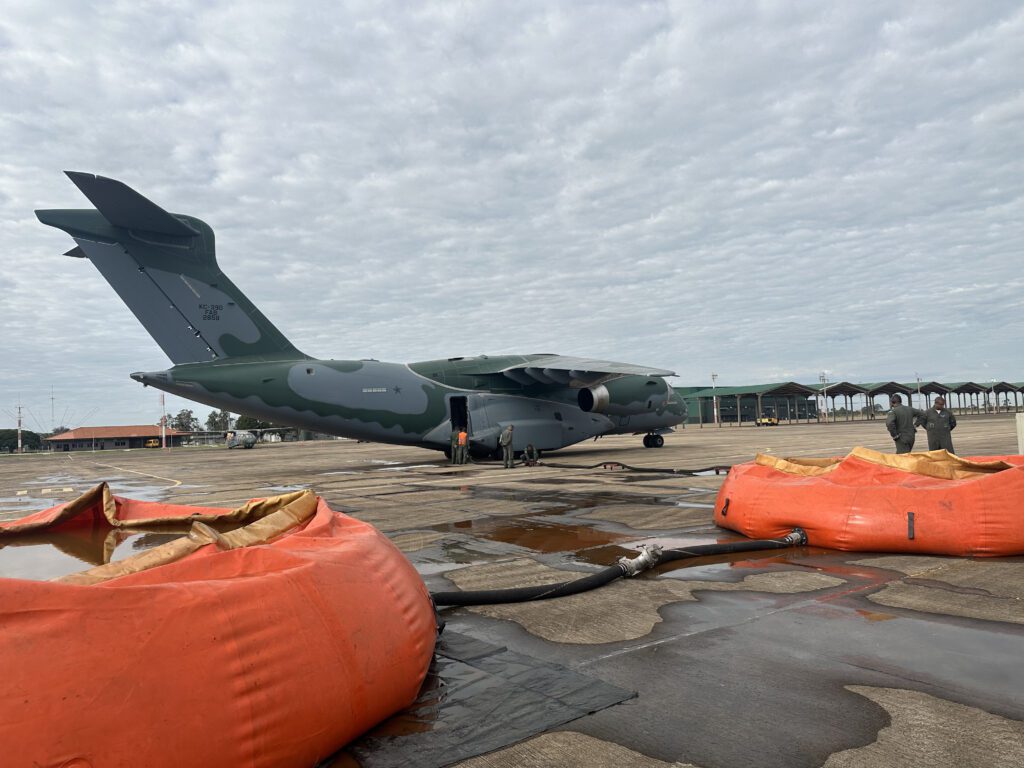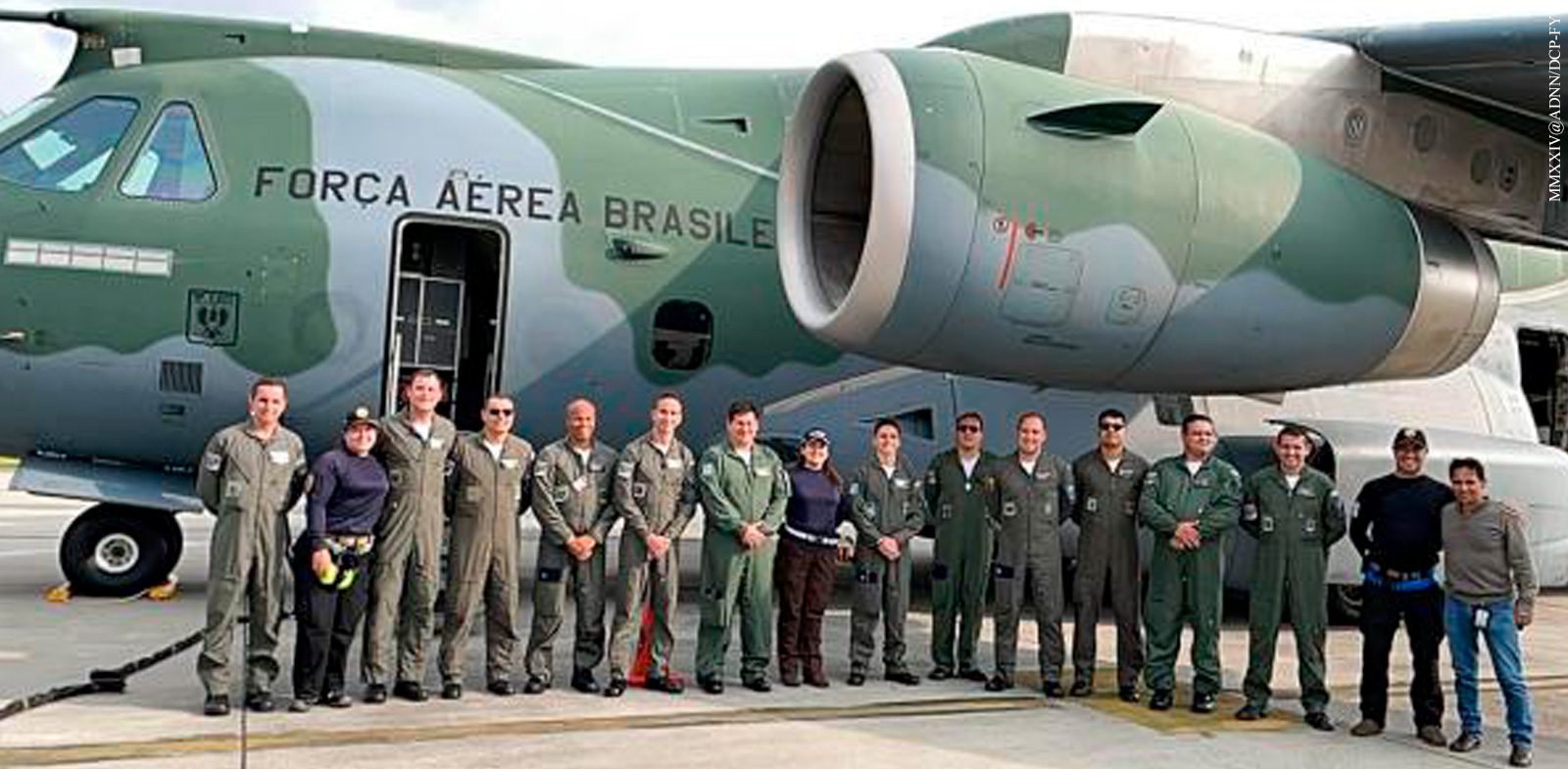A Colombian Air Force C-130 aircraft was equipped with FAB firefighting systems
Air Force Agency – by Lieutenant Eniele Santos and 1st GTT
204 fires a month – about eight a day! Hundreds of people affected! This is the natural disaster plaguing Colombia after the forest fires hit the entire country. In the midst of this unprecedented environmental crisis, the Brazilian Air Force (FAB) carried out a collaboration mission with the Colombian Air Force (FAC).
As soon as it was called in, on 31/01, the FAB, recognizing the magnitude of the disaster, mobilized a KC-390 Millenium aircraft, operated by the 1st Troop Transport Group (1st GTT) – Zeus Squadron, to take part in this mission. The multi-mission aircraft took off from the Anápolis Air Base (BAAN) – equipped with the Modular Airborne Fire Fighting System (MAFFS II), which is essential for carrying out in-flight firefighting actions – bound for the Galeão Air Base (BAGL).
In the capital of Rio de Janeiro, a FAC C-130 aircraft was waiting for the Brazilian aircraft so that it could be equipped with the FAB’s MAFFS I system and head back to Colombia’s El Dorado airport (SKBO), the largest and most important airport in Colombia, to start fighting the fires that have broken out in various areas of the country.
On board were military personnel from the BAAN and BAGL who took part in the process of preparing and testing the MAFFS system on the Colombian aircraft, which was coordinated by the Second Deputy Chief of Staff of the Air Force and the Aerospace Operations Command. The transportation of the system will enable Colombia to increase its forest fire fighting capabilities, making it an important ally for the preservation of forests, such as the Amazon Rainforest in the countries’ territories.

The First Fleet of the First Transport Group (1º/1º GT) – Gordo Squadron, was also responsible for installing the equipment to be sent to Colombia. According to the Commander of the Gordo Fleet, Lieutenant Colonel Umile Coelho Rende, the system can be quickly installed or removed from the aircraft’s cargo compartment, since its structure was designed in such a way as to make its installation and uninstallation on the aircraft efficient, which takes around 3 hours for the complete assembly or disassembly of the air vector. For this mission, the environmental protection kit provided is 16 meters long and has the capacity to release 12,000 liters of water and fire retardant.
“The system was installed on Colombia’s C-130 aircraft with the support of Galeão Air Base. The aircraft’s electrical and structural connections were adapted to make the Brazilian equipment compatible with the foreign aircraft. In addition, a team of FAB technicians provided all the support for the aircraft’s and equipment’s ground operations and remained on board the aircraft to provide any assistance that might be needed,” explained the Commander of the 1st/1st GT.
The commander of the KC-390 aircraft used in the mission, Major Anderson Dias, stressed that taking part in this action ratifies the vocation of the 1st GTT to carry out transport with a rapid response, assisting in national and international demands. “This mission demonstrates the KC-390’s ability to support cooperation demands between Brazil and its neighboring countries whenever necessary, and is a source of great pride for us,” he explained.
MAFFS II

The Modular Airborne Fire Fighting System projects water through the side door in the fuselage, making it possible to keep the interior of the aircraft pressurized, i.e. without compromising its performance.
Among the main features of the MAFFS II system are its low maintenance cost, rapid configuration and multi-mission flexibility, and it can be used to fight fires, chemical spills, nuclear, radiological and biological contamination, among others.
Because it has this system, the FAB is one of the air forces capable of carrying out major firefighting missions, as it did in 2023, when it assisted in fighting the forest fires that hit the city of Concepción in Chile, in the south-central part of the country. The operation involved the deployment of 636,000 liters of water and more than 40 hours of flight time.
Today, this collaboration not only strengthens ties between Brazil and Colombia, but also highlights the need for a rapid response to environmental challenges. The situation in Colombia serves as a reminder of the urgency of coordinated and effective action on an international scale to preserve the environment.
Photos: 1st/1st WG and 1st WG Document Management and Support Cell. *** Translated by DEFCONPress FYI Team ***
